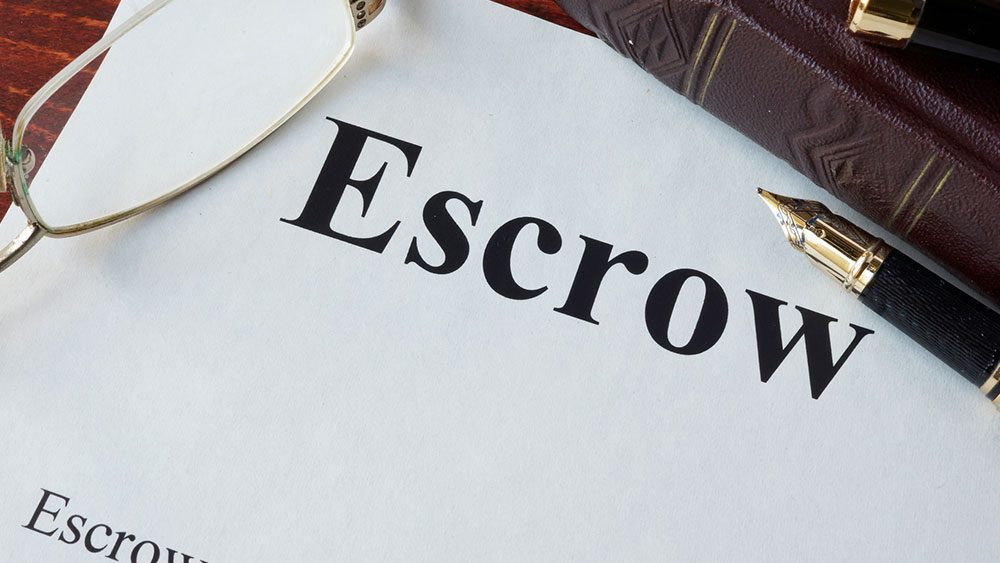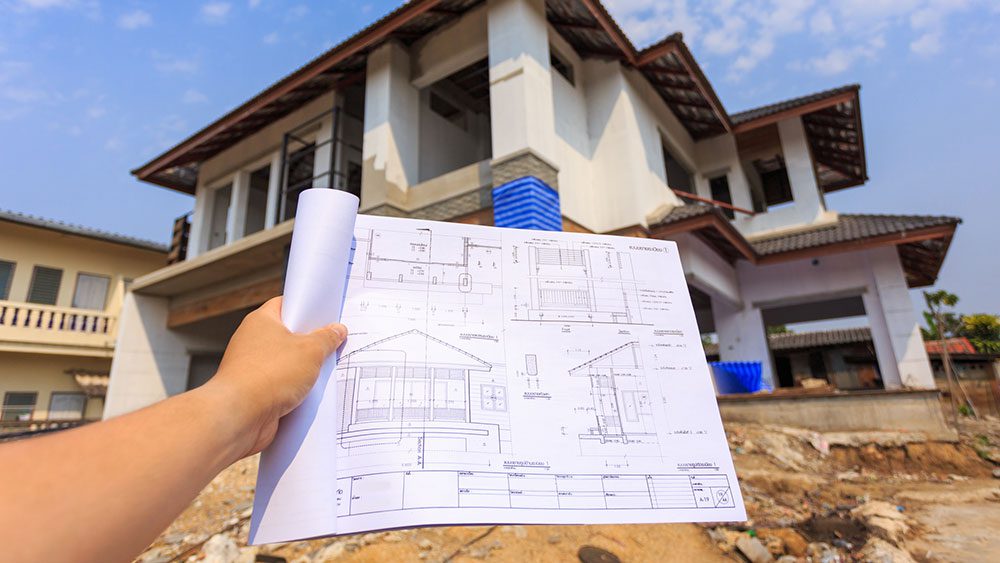The world of real estate is rich with opportunities as much as it is with complexities. One such fundamental part of the real estate transaction is the concept of escrow. Due to its intricate process, this term often confuses buyers and sellers. However, understanding escrow’s meaning and process is vital to making informed decisions in the real estate market.
What is Escrow?
Escrow is a financial arrangement where a neutral third party, known as an escrow agent, holds an asset or funds temporarily until a specific condition or criteria are met. The process ensures that the funds or assets are safe and that both parties fulfill their contractual obligations.
In simpler terms, the word ‘escrow’ is derived from the Old French word ‘escrow,’ which means a scrap of paper or a scroll. In a real estate context, that scroll or contract is a binding agreement between a buyer and a seller. Once the scroll is honored, the assets or funds held in escrow are effectively released.
An escrow decreases the potential risk of fraud by acting as a neutral third party. It holds the assets or funds involved in a transaction until it confirms that all parties have followed the agreed-upon instructions. Thus, the escrow ensures that the transaction will proceed securely and smoothly.
Role of Escrow in Real Estate Transactions
Escrow plays a vital role in real estate transactions. Besides holding funds or assets, the escrow agent ensures that the terms and conditions of the agreement between the buying and selling parties are fulfilled before the transaction is completed. This provides an added layer of safety and transparency for all involved parties, ensuring everyone gets what has been agreed upon in the transaction.
The crucial role of escrow in real estate transactions includes:
- Holding deposits: The escrow agent holds the earnest money deposit made by the buyer when the purchase agreement is signed. This deposit in the escrow account reassures the seller that the buyer is serious and committed to completing the transaction.
- Document examination: The escrow agent examines all pertinent documents, such as the purchase agreement, deed, loan information, and inspections, to confirm that all conditions have been met before the disbursement of funds.
- Funds disbursement: Upon completing the contractual obligations and verifying all necessary documentation, the escrow agent releases funds and transfers property ownership.
- Record keeping: The escrow agent provides detailed accounting for the transaction, maintaining a record of funds received and disbursed, which ensures a fair and transparent transaction for all parties.
In summary, an escrow agent acts as a neutral and impartial party during a real estate transaction, ensuring that all the terms and conditions are met, protecting buyers and sellers.
The Escrow Process – Step by Step Analysis
In this section, we delve into the details of the escrow process, including opening and closing the account.
Opening an Escrow Account
Opening an escrow account is the initial step in the escrow process. Once a purchase agreement for a property has been signed by both the buyer and the seller, they move toward opening an escrow account. This is generally opened with a neutral third party, such as an escrow or title company.
The buyer deposits funds into this account, often including earnest money, down payment, and closing costs. The funds in the escrow account serve as a sign of good faith, reassuring the seller that the buyer intends to complete the transaction.
The escrow agent manages the account and ensures the secure holding of the money until the property purchase is complete. In addition to money, the escrow account can also hold the property deed and other important documents pertaining to the transaction.
Keep in mind that setting up an escrow account may require an upfront deposit, and escrow companies may charge extra for their services.
Overall, opening an escrow account signals the commencement of the homebuying process. It’s a secure place for money and documents, implying both parties are moving forward with the transaction.
Appraisal and Home Inspection
Once an escrow account is established, the next crucial steps in the homebuying process involve an appraisal and a thorough home inspection. These are significant steps as they ensure the buyer makes a sound financial investment.
Appraisal:
An appraisal aims to determine the home’s fair market value. Typically, the mortgage lender orders an appraisal.
When the appraised value of a home is lower than the agreed purchase price, several options can be considered:
- The seller and buyer can renegotiate the sale price to reflect the lower appraised value.
- The buyer may increase their down payment to meet the new loan-to-value ratio and down payment requirements.
- Both parties can mutually agree to cancel the home purchase contract.
- Either the buyer or seller can request a rebuttal of the appraisal to challenge its findings.
The appraised value is a key factor in how much a lender will allow a buyer to borrow. Therefore, a lower-than-expected appraisal can impact the terms of the mortgage.
Home Inspection:
Home inspection is an integral part of the home purchase process. As a buyer, you can hire a home inspector to evaluate the home’s condition, including its structural integrity, electrical and plumbing systems, heating and cooling systems, and more.
The inspector’s report will reveal any major and minor issues with the house, allowing the buyer to request repairs or negotiate a lower price. Most real estate professionals advise against waiving an inspection.
The seller must also provide disclosures and an obligation to report known negative conditions or flaws with the home, such as lead paint or asbestos.
By having the property appraised and inspected, buyers can ensure they pay a fair price and won’t be surprised by costly repairs after closing.
Final Walkthrough Before Closing
The final walkthrough is a critical last step in the homebuying process. As the buyer, the walkthrough allows you to visit the property right before the closing day to ensure there’s no new damage and that the seller has fulfilled all purchase contract terms.
The purpose of this walkthrough is to confirm that the home is still in the same condition as it was during the inspection. During the walkthrough, checking the entire property exterior for any obvious issues is a good idea. Running all of the home’s water sources like sinks, faucets, tubs, showers, and the dishwasher can indicate the home’s water pressure and if there have been any plumbing problems.
Some points to check during the final walkthrough include:
- Sellers have left behind appliances or fixtures they agreed on in the contract.
- The home meets the cleanliness standards outlined in your contract.
- There’s been no physical damage or changes since the inspection.
Buyers are generally not allowed to back out of the purchase unless a major issue is discovered. By doing this final walkthrough, you can have the peace of mind of knowing you’re purchasing the home you expected.
Closing of Escrow and Post-Closing Formalities
The escrow closing or settlement process finalizes the real estate sale. This is when the buyer becomes the homeowner and signifies the end of the purchase process.
Three business days before the closing of the transaction, the lender sends the buyer a ‘Closing Disclosure,’ a document that provides a final detailed list of closing costs, including escrow amounts. The buyer should compare this to the loan estimate received during the loan application process to ensure no significant cost changes.
Once it’s time to close, the escrow agent produces a document that legally names the buyer as the homeowner, files it with the local records office, and wires the funds from your escrow account to pay the seller and the seller’s lender. The remaining funds intended for the down payment and closing costs are usually transferred via a cashier’s check.
The escrow holder then carefully disburses all funds as detailed in the real estate contract and mortgage agreement. These payments include loan origination, title, insurance fees, real estate agent commissions, HOA dues, the purchase funds from your mortgage loan, and closing costs detailed in your final Closing Disclosure.
Once the closing process is complete, the buyer usually receives a packet of documents, including the deed, confirming officially that the property ownership has been transferred.
Reaching the ‘close of escrow’ means all parties have fulfilled their responsibilities, and the buyer is now the rightful owner of the property. Even if the overall process may seem overwhelming initially, understanding each step and actively participating can ensure a smoother transaction for everybody involved.
FAQs
Are escrow accounts mandatory for a real estate transaction?
The requirement for escrow accounts varies depending on your mortgage lender and the specifics of your loan. Typically, homebuyers must have an escrow account if their down payment is less than 20 percent of the home’s purchase price.
Lenders often mandate an escrow account to ensure that necessary items such as property taxes and insurance are paid promptly and correctly, minimizing their risk as well as yours.
Government-backed loans like FHA and USDA typically require an escrow account. The Veterans Administration (VA) does not explicitly mandate escrow accounts for VA loans; however, the loan lender may require one.
Consult with your lender to understand their specific escrow requirements, as these can differ from institution to institution. It’s also important to note that even if an escrow account isn’t mandatory, you may still utilize one to streamline your budgeting and payment processes for real estate-related expenses.
Can you avoid escrow?
It’s possible to avoid setting up an escrow account, but it generally depends on your loan type and your lender’s requirements. Escrow accounts are typically required for government-backed loans (like FHA and VA loans) and conventional loans with less than a 20% down payment.
However, if you’re taking out a conventional loan and have a down payment of 20% or more, you may have the choice to opt out of an escrow account. In such cases, you would be responsible for paying property taxes and homeowners insurance.
In some circumstances, opting out of escrow can reduce your monthly payment; however, because the lender might increase the interest rate to compensate for the increased risk of not having an escrow account, you could also pay a higher monthly payment.
- Opting out of escrow can sometimes, but not always, reduce the monthly payment.
- Opting out can also lead to a higher monthly payment due to a potentially increased interest rate.
Furthermore, this puts the responsibility of saving for and making these payments on your shoulders. Any missed or late payments could result in fines or, in severe cases, a lien on your home.
Before you avoid escrow, consider whether you can effectively manage these out-of-pocket expenses. The peace of mind of knowing critical payments are being handled can outweigh the potential stress of handling these payments by yourself. Always consult with your lender or financial advisor to understand your options and make an informed decision.
Closing Points
Escrow accounts play a significant role in ensuring the secure and efficient execution of real estate transactions. They help to keep all parties—the buyer, the seller, and the lender—safe from potential fraud and misunderstandings.
From holding earnest money to facilitating the payment of important costs like property taxes and homeowners’ insurance, escrow services provide a blanket of security around homebuying.
Remember the potential benefits and drawbacks when considering escrow. It is a protective measure designed to make the real estate process more secure, transparent, and less stressful for everyone involved.
© 2024 xpertRealtyMarketing.



